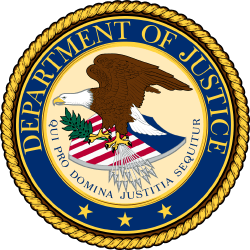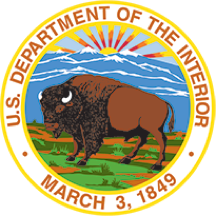Public policy
The relevant laws and policies for delivering better digital services
Public policy plays a vital role in how federal programs serve the public. More than 100 laws, memos, and other policies impact federal websites, covering topics such as accessibility, privacy, security, design, and user experience. It is important for web and digital practitioners to understand the policy framework.
Related Policy
21st Century Integrated Digital Experience Act and OMB M-23-22

Public policy: Essential knowledge
-
Requirements for strengthening the federal government’s commitment to digital accessibility
Understanding Section 508 of the Rehabilitation Act of 1973, Section 508 standards, and OMB M-24-08.
-
Requirements for transforming federal customer experience and service delivery
Understanding Executive Order 14058 and OMB Circular A-11, Section 280 (2024).
-
Requirements for delivering a digital-first public experience
Understanding the 21st Century Integrated Digital Experience Act and OMB M-23-22.
-
Requirements for the registration and use of .gov domains in the federal government
Understanding the DOTGOV Online Trust in Government Act and OMB M-23-10.
-
Requirements for improving access to services for people with limited English proficiency
Understanding Executive Order 13166, Attorney General memorandum, and Title VI of the Civil Rights Act.
-
Requirements for improving the management of federal programs and projects
Understanding the Program Management Improvement Accountability Act and OMB M-18-19.
Public policy events
The plain language tie to translating digital content
2022 Federal Plain Language Summit
Increase Your Impact With Plain Language
Plain Language + Compassion Help People in Crisis
Public policy news
User research and the Paperwork Reduction Act
User research is an important part of customer experience transformation. Different types of research require different approval under the Paperwork Reduction Act (PRA). Through seven case studies, the U.S. Digital Service shows how agencies conducted valuable user research that did not require PRA approval and successfully integrated findings into their projects. Their work illustrates how thoughtful user research transforms delivery of services and helps agencies build trust in government.— via U.S. Digital Service

Department of Justice recognizes anniversary of executive order to improve access for people with limited English profiency
The Department of Justice recently marked the 24th anniversary of Executive Order 13166, which aims to improve access to federal services for individuals with limited English proficiency (LEP). Its Civil Rights Division reviewed language access plans across federal agencies, emphasizing progress in hiring and staff training, improving language assistance services, and expanding multilingual content. The department is committed to eliminating language barriers in federal programs, improving communication and access for all communities.— via Department of Justice

IT warning banners: How GSA is working to stop unnecessarily frightening users
OMB Memo M-23-22 discourages the use of pop-ups and modals. GSA IT updated security policies so that IT warning banners are presented less intrusively to users.
Bridge the gap between policy and implementation: Impactful solutions and strategies for success from Digital.gov’s spring 2024 summit
The summit highlighted digital transformation, emphasizing the significance of recent OMB memos for improving accessibility and customer experience.
FedRAMP governance
The Federal Risk and Authorization Management Program (FedRAMP) has recently updated its governance structure to better serve its customers. Learn about their recently-formed FedRAMP Board, composed of federal executives; the FedRAMP Technical Advisory Group (TAG), composed of technology experts; and updates made to the Federal Security Cloud Advisory Committee (FSCAC). These groups collectively aim to strengthen and expand FedRAMP’s cloud service capabilities.— via FedRAMP

Resources on Public policy
-
Requirements for achieving efficiency, transparency, and innovation through reusable and open source software
Learn how Federal Source Code Policy supports reuse and public access to custom-developed federal source code.
-
Requirements for transforming federal customer experience and service delivery
Learn how to strengthen customer experience and service delivery within your federal agency.
-
Requirements for strengthening the federal government’s commitment to digital accessibility
Learn how to implement Section 508, and strengthen and maintain your agency’s commitment to digital accessibility.
-
Requirements for the registration and use of .gov domains in the federal government
Learn how to implement the DOTGOV Online Trust in Government Act and understand how to register federal internet domain names.
-
Requirements for improving access to services for people with limited English proficiency (LEP)
Learn how to strengthen and improve meaningful language access for all people in the U.S., regardless of the language they speak.
-
An introduction to the Digital Experience Council
The Digital Experience (DX) Council plays a critical role in coordinating governmentwide efforts and assisting agencies in delivering digital experiences that meet the public’s needs and expectations.
-
M-24-08 Strengthening Digital Accessibility and the Management of Section 508 of the Rehabilitation Act
Provides requirements and recommendations to support agency integration of digital accessibility into their missions and operations, helping government technology and information resources better serve a diverse public and federal workforce.
-
An introduction to web security
Guidance on meeting security requirements for federal websites.
-
An introduction to ATOs
What is an Authorization to Operate? Before you use software in government, you need to make sure it is allowed. You should know what an ATO is, and when you need one.
-
An introduction to security and privacy controls
What do the control families of NIST 800-53 mean? Here’s an overview of the control families that create the foundation of federal security compliance.
Tools and Services
-
Resources.Data.gov
An online repository of policies, schema standards, tools, best practices, and case studies to provide agencies with resources for federal data management.
-
Section508.gov
Guidance for federal agencies on IT accessibility compliance.
-
The Guide to the Paperwork Reduction Act
Get help with the PRA, planning and submitting an information request, and finding your agency’s PRA contact.
-
Challenge.gov
Provides resources and collaborative opportunities to facilitate the use of prize competitions in government.
-
FedRAMP
The Federal Risk and Authorization Management (FedRAMP) is a process that authorizes cloud products and services.
More News and Events on Public policy
35 posts
User research and the Paperwork Reduction Act
User research is an important part of customer experience transformation. Different types of research require different approval under the Paperwork Reduction Act (PRA). Through seven case studies, the U.S. Digital Service shows how agencies conducted valuable user research that did not require PRA approval and successfully integrated findings into their projects. Their work illustrates how thoughtful user research transforms delivery of services and helps agencies build trust in government.— via U.S. Digital Service

Department of Justice recognizes anniversary of executive order to improve access for people with limited English profiency
The Department of Justice recently marked the 24th anniversary of Executive Order 13166, which aims to improve access to federal services for individuals with limited English proficiency (LEP). Its Civil Rights Division reviewed language access plans across federal agencies, emphasizing progress in hiring and staff training, improving language assistance services, and expanding multilingual content. The department is committed to eliminating language barriers in federal programs, improving communication and access for all communities.— via Department of Justice

IT warning banners: How GSA is working to stop unnecessarily frightening users
OMB Memo M-23-22 discourages the use of pop-ups and modals. GSA IT updated security policies so that IT warning banners are presented less intrusively to users.
Bridge the gap between policy and implementation: Impactful solutions and strategies for success from Digital.gov’s spring 2024 summit
The summit highlighted digital transformation, emphasizing the significance of recent OMB memos for improving accessibility and customer experience.
FedRAMP governance
The Federal Risk and Authorization Management Program (FedRAMP) has recently updated its governance structure to better serve its customers. Learn about their recently-formed FedRAMP Board, composed of federal executives; the FedRAMP Technical Advisory Group (TAG), composed of technology experts; and updates made to the Federal Security Cloud Advisory Committee (FSCAC). These groups collectively aim to strengthen and expand FedRAMP’s cloud service capabilities.— via FedRAMP

Justice department to publish final rule to strengthen web and mobile app access for people with disabilities
On April 8, Attorney General Merrick B. Garland signed a final rule under Title II of the Americans with Disabilities Act (ADA) to ensure the accessibility of web content and mobile applications for people with disabilities. This final rule clarifies the obligations of state and local governments to make their websites and mobile applications accessible. Learn more about this rule and why the Attorney General believes it will “break down barriers that have kept people with disabilities from fully participating in American Life.”— via Department of Justice

Who is controlling your control system?
Best practices for security administration of control systems and their components. Specific guidance and lessons learned from a federal information system manager.
Navigating the NIST industrial control systems overlay
A quick-start user guide for information technology professionals to begin using overlays as a part of their regular security assessments.
Why the American People Deserve a Digital Government
OMB released new policy guidance for government that includes a variety of actions and standards to help federal agencies design, develop, and deliver modern websites and digital services. Memo M-23-22, Delivering a Digital-First Public Experience, will make it seamless for the public to obtain government information and services online, and help agencies fully implement the 21st Century Integrated Digital Experience Act (21st Century IDEA).— via The White House

Strengthening information accessibility for consumers with limited English proficiency
A digital accessibility catalyst for your next policy refresh
Use GSA’s IT Accessibility Policy Framework to update digital accessibility language in your agency’s policies.
The plain language tie to translating digital content
2022 Federal Plain Language Summit
Measuring and Justifying the Government Experience
Measuring and Justifying the Government Experience—Private sector organizations use revenue as the primary measurement to justify improving experiences. Many government services don’t have revenue as a lever, so how can we justify work to improve experience? The Office of Natural Resources Revenue (ONRR) leveraged a few metrics on their team that fall into three categories: laws and regulations, improving the experience for users, and saving time for employees.— via Office of Natural Resources Revenue

U.S. Department of Defense Releases First Departmentwide Social Media Policy
The DOD released a policy that for the first time spells out, from the highest levels of the defense community, how DOD military and civilian personnel should use official social media accounts to best advance the mission of the U.S. military and further instill trust in the credibility of the DOD.
Increase Your Impact With Plain Language
Plain Language + Compassion Help People in Crisis
Language Connections: Tips to Create, Maintain, and Present Non-English Digital Content
The Weekly Ship: What It Is, Why Useful, and How To Create Your Own
The Weekly Ship: What It Is, Why It’s Useful, and How To Create Your Own—The weekly ship has been a staple of 18F projects for years. It is a way to engage partners, inform teammates, and reflect on our work.— via 18F
















